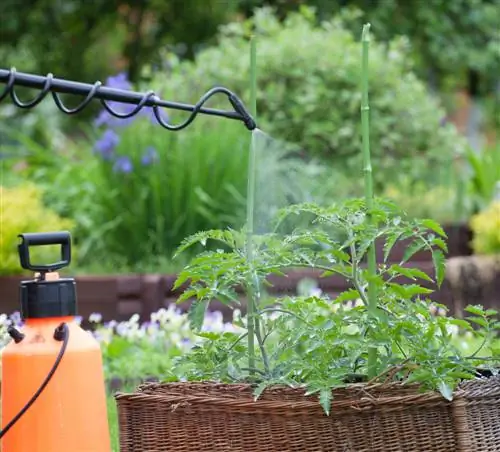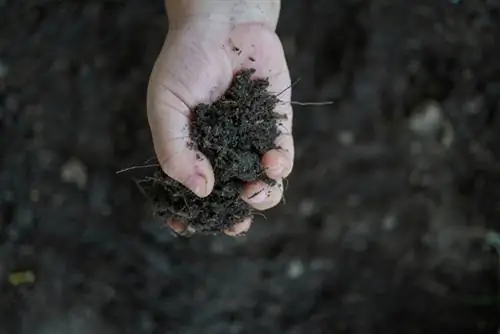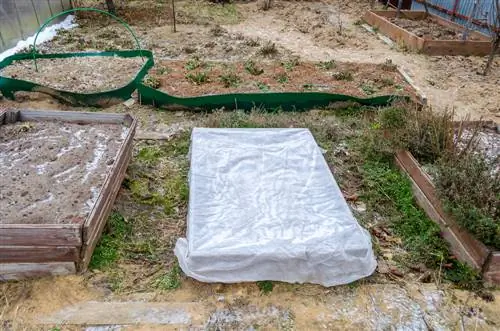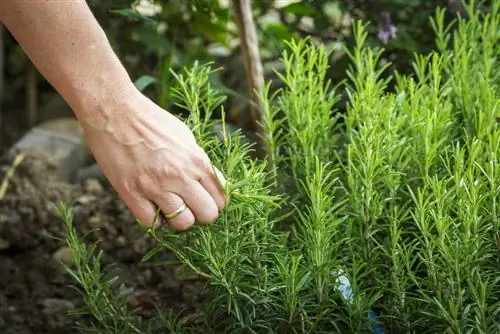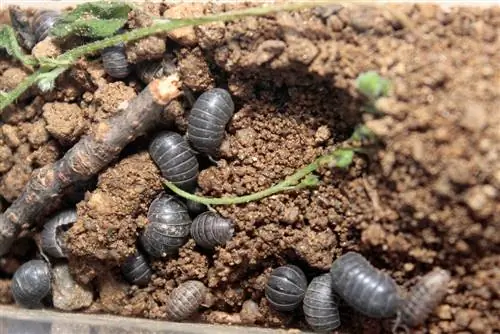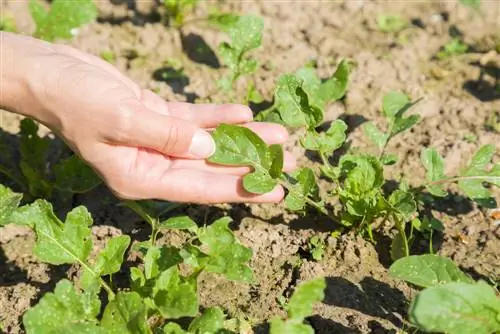- Author admin [email protected].
- Public 2023-12-16 16:46.
- Last modified 2025-06-01 06:02.
Many delicious fruits and vegetables from the garden unfortunately also taste good to insects, snails and other pests. At best, you make life miserable for the animals right from the start - by growing vegetables in mixed cultures and deliberately introducing so-called beneficial insects.
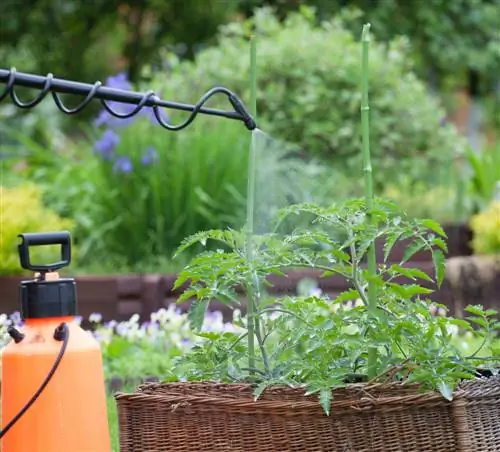
What pests occur in the vegetable garden?
Common pests in the vegetable garden are leaf sap-sucking insects such as aphids, spider mites, thrips, whiteflies and cicadas as well as feeding pests such as snails, voles and field mice, mole crickets and Japanese beetles. Mixed cultures, beneficial insects, snail fences and regular controls help against them.
Leaf sap-sucking pests
Leaf sap-sucking pests, which are mostly insects or arachnids, are not only found in the garden, but also on houseplants. These unwanted companions appear particularly frequently:
- Aphids of different species
- Spider mites
- Thrips or bladder feet
- Whiteflies
- Nematodes or elves
- Cicadas
In many cases, infestation by these pests can be prevented by not planting too densely and by regular watering with nettle or horsetail broth. Since these animals reproduce very quickly, the vegetable plants should be checked regularly and action should be taken quickly in the event of a positive result.
feeding pests
Snails, especially the slugs between one and 25 centimeters long, are probably the biggest terror in the vegetable patch. They appear in large numbers in wet weather, prefer to feast on young plants, tender new shoots and sweet strawberries and live hidden during the day. A good snail fence around the bed is usually the best defense, whereas the common beer traps often only seem to attract more snails. Otherwise you can easily collect the animals in the morning under specially laid boards and sacks.
Voles and field mice
Voles and field mice are also a big nuisance, digging tunnels underground and eating roots, bulbs, tubers, seeds, young plants or bark. The animals are difficult to drive away, although repellent gases in the form of granules or cartridges placed in the animal's burrows work best. As a last resort, the desperate gardener only has vole traps or poison bait.
Mole cricket
The mole cricket or werere is a brown-black insect up to five centimeters long that digs long, underground tunnels with its shovel legs. It often lifts seedlings and saplings, which then die, and also eats roots and tubers. The animals can be caught with jars buried at ground level and caught with a nematode preparation.
Japanese Beetle - Rare and Reportable
The Japanese beetle comes from Japan and is one of the invasive species that comes to us via imports. It attacks around 300 host plants, including fruit trees and vegetables. Its identifying features include two tufts of white hair on its abdomen and four tufts of white hair on the left and right sides of its body. The beetles can only be controlled naturally using nematodes, pheromone traps or native animal species such as hedgehogs.
Other common pests
In addition to the pests mentioned, there are a number of insects that often only cause damage to certain species or plant families, but avoid others.
Flying
These include, for example, vegetable flies, which are usually highly specialized on certain groups of plants, such as the cabbage, carrot, asparagus and onion flies. The tiny leaf miners particularly like to eat leeks, lettuce, Chinese cabbage, cucumbers, rocket and basil. Very close-meshed cultural protection nets that are laid out right away when sowing or planting have proven to be effective.
Butterflies
There are also many pests in the group of butterflies, with the large and small cabbage white butterflies being particularly well known. Both species fly from April or May, but the second generation of caterpillars from July is most dangerous for the vegetable garden. Cultural protection nets that are laid out in a timely manner also help here.
Tip
The yellow-black striped Colorado potato beetle can destroy the potato crop, whose orange-red egg clutches should be crushed or removed immediately. Check the potato leaves regularly!

